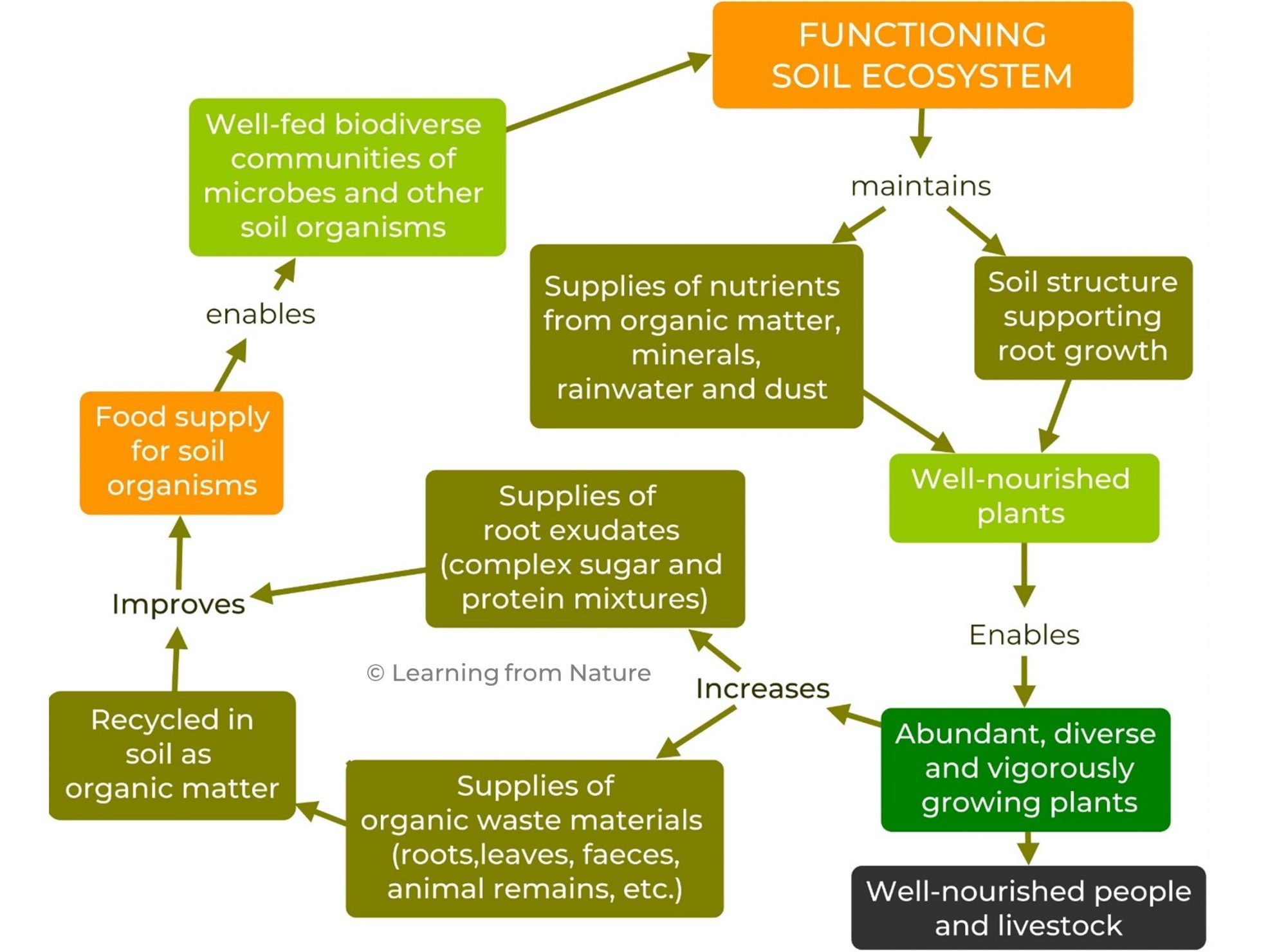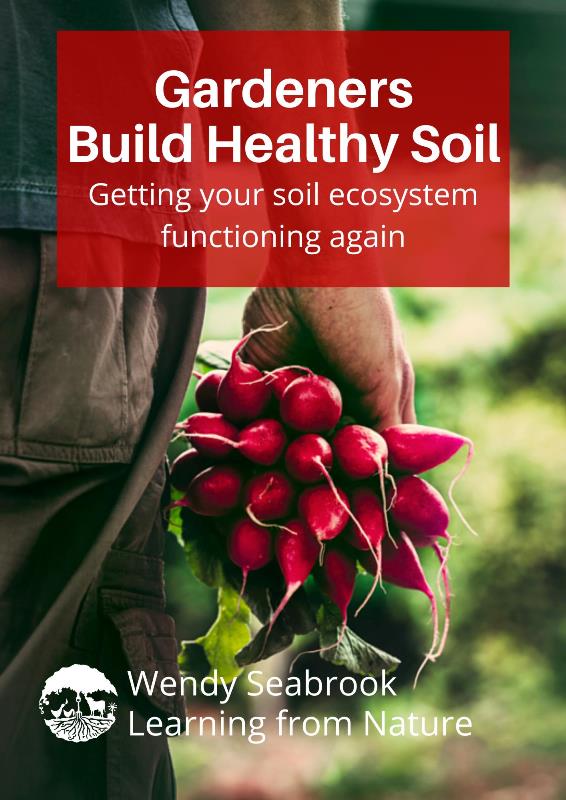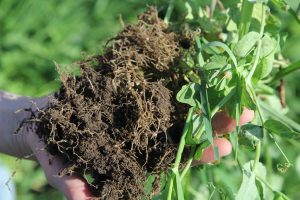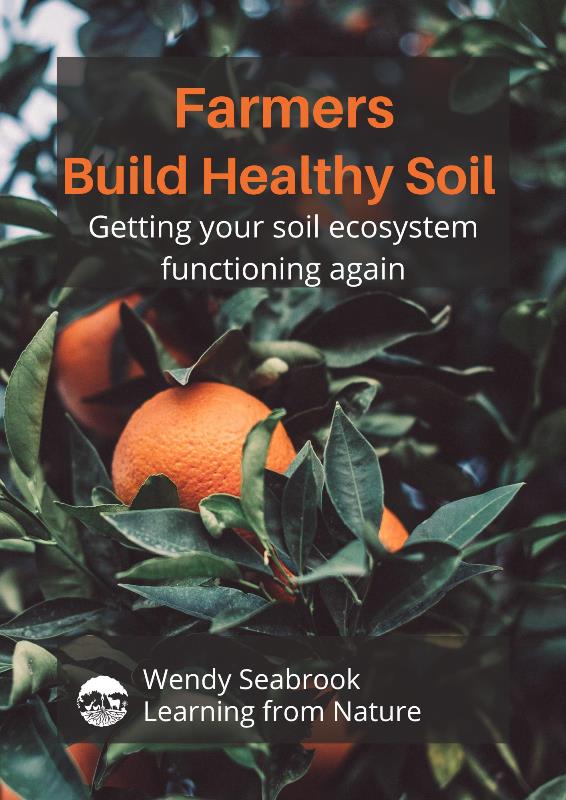We talk about the importance of having healthy soil. But what do we actually mean? How do we know if our soil is healthy?
Typically, we assess the health of our soil using indicators like organic matter, nutrient levels, pH, cation exchange capacity, the depth and colour of our topsoil, water infiltration, and the presence of soil aggregates and earthworms. However, this approach is flawed because functioning soil ecosystems are needed to improve these measures.
Functioning soil ecosystems are needed to grow strong, pest – and disease-resistant plants, nutrient-dense food, and “sustain the productivity, diversity, and environmental services of terrestrial ecosystems,” especially when weather conditions are not ideal. Issues like low levels of organic matter, soil carbon, poor drainage, and nutrient deficiencies in food tell us that our soil ecosystems are not in good working order.
It doesn’t make much sense to spend our time, energy, and money improving these symptoms when we can improve the system itself!

Services provided by Functioning Soil Ecosystems
Soil Ecosystems are Complex, but Repairing them isn’t Complicated
The trick is managing our farms and gardens to give our soil organisms the resources to repair and maintain our soil ecosystems. They are the experts! Watch this video, and get our Handbook (see below).
Get practical help to repair your soil ecosystems using our Handbooks for farmers and gardeners


